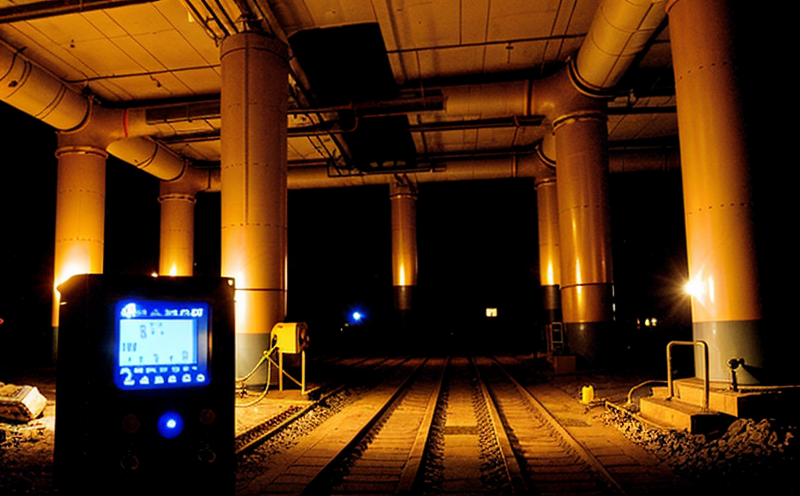IAEA Alpha Beta Monitoring in Mining Environments Testing
The International Atomic Energy Agency (IAEA) guidelines for radiation monitoring are critical for ensuring safety and compliance in mining environments. The IAEA Alpha Beta Monitoring service focuses on the detection, measurement, and evaluation of alpha and beta particles emitted by radioactive materials present within mines and other similar industrial settings.
Alpha and beta particles can pose significant health risks if not properly managed. This service is designed to help mining companies comply with international safety standards while minimizing potential hazards to workers and the environment. The methodology adheres strictly to IAEA guidelines, ensuring that all monitoring activities are conducted in a manner consistent with global best practices.
The testing process involves several key steps: first, identification of radioactive sources present within the mining site, followed by the deployment of appropriate detectors capable of capturing alpha and beta emissions. Specimen preparation is crucial; it entails collecting samples from various points around the mine to ensure a comprehensive analysis. Once collected, these specimens undergo rigorous examination using specialized equipment that can accurately quantify the levels of radiation.
Reporting plays an essential role in this service as well. Results must be detailed and actionable, providing insights into current conditions at different locations within the mine. Compliance officers will find particular value here since it allows them to make informed decisions about necessary safety measures. R&D engineers can leverage these reports to refine their models or develop new technologies aimed specifically at improving operational efficiency without compromising on safety standards.
One of the most significant advantages of adhering to IAEA guidelines lies in its ability to foster a culture of continuous improvement within mining operations. By regularly monitoring radiation levels, companies can identify trends over time and address any emerging issues proactively rather than reactively. This proactive approach not only enhances overall safety but also contributes positively towards maintaining good standing with regulatory bodies worldwide.
It is important to note that while this service primarily targets mining environments, its principles apply equally well across other industries dealing extensively with radioactive materials such as nuclear power plants or laboratories handling hazardous substances. The shared goal remains constant: protect people and the environment from unnecessary exposure to ionizing radiation.
Scope and Methodology
The scope of IAEA Alpha Beta Monitoring in Mining Environments Testing encompasses comprehensive evaluation of alpha and beta particle emissions within mining operations. The methodology follows stringent protocols outlined by the International Atomic Energy Agency, ensuring accuracy and reliability of results.
To begin with, identification is paramount; this involves pinpointing all radioactive sources present within or around the mine site using advanced detection equipment. Once identified, these sources are then subjected to thorough analysis through specialized monitoring devices capable of measuring both alpha and beta particle counts accurately.
Specimen preparation follows closely behind identification; here, samples are gathered from various strategic locations throughout the mine. These samples serve as primary data points used in subsequent analyses conducted by our team. After collection, specimens undergo meticulous examination under controlled conditions to ensure integrity before being analyzed further.
The final step involves detailed reporting based on findings obtained during specimen analysis. This report includes quantitative information about alpha and beta particle levels detected across different areas within the mine. The aim is not only to provide a snapshot of current radiation levels but also to offer insights into potential patterns or trends over time, which can be invaluable for informed decision-making.
Industry Applications
| Application Area | Description of Application |
|---|---|
| Nuclear Power Plants | Monitoring alpha and beta particle emissions helps ensure safe operation by identifying any leaks or breaches early on. |
| Radiation Laboratories | Aiding researchers in understanding the behavior of radioactive materials under controlled conditions. |
| Medical Isotope Manufacturing Facilities | Ensuring compliance with safety regulations while optimizing production processes for efficiency and reliability. |
In addition to the applications listed above, this service finds relevance in diverse sectors including environmental protection agencies responsible for overseeing industrial activities involving radioactive materials. By adhering strictly to IAEA standards, our clients gain an edge over competitors by demonstrating their commitment to high levels of safety and regulatory compliance.
Competitive Advantage and Market Impact
Adopting the IAEA Alpha Beta Monitoring in Mining Environments Testing service offers numerous competitive advantages for mining companies. Firstly, it positions them as leaders in operational safety, attracting more investment from stakeholders who prioritize worker well-being and environmental sustainability.
In terms of market impact, compliance with these stringent standards enhances reputation among consumers concerned about ethical sourcing practices. Moreover, adherence to international standards such as those set by the IAEA opens doors to new markets where regulatory requirements may be similar or stricter than local ones.
From a technical standpoint, our service ensures that mining operations are conducted safely and efficiently, reducing risks associated with radiation exposure. This translates directly into lower insurance premiums due to reduced likelihood of incidents leading to costly claims. Additionally, efficient management of radioactive materials leads to cost savings through optimized resource utilization and minimized waste.





